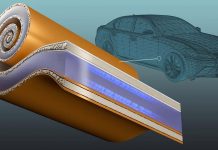
Solar power is fantastic – it’s a way to turn sunlight into electricity.
But like every technology, it has room for improvement.
Researchers in China have found a brilliant way to make solar cells even better. Their findings were showcased in the well-known scientific journal, Nature.
Here’s the lowdown:
Scientists worldwide are racing to make solar cells more effective. Imagine a huge solar net catching sun rays.
The better the net, the more sun power we can grab and turn into electricity. This is what researchers call “conversion efficiency.” Right now, we’re aiming to improve this “catch rate.”
Lead-halide perovskite solar cells, which is quite a mouthful, are superstars in the solar world. They’re fantastic at catching sunlight. However, their growth in efficiency has somewhat stalled recently.
Instead of just tweaking the surface, scientist Pan Xu and his team from the Hefei Institutes of Physical Science decided to look inside the solar cell to see what’s going on.
Inside the solar cell, there’s a sort of jumble where certain elements, called “cations,” don’t spread out evenly. Think of this as a lumpy cake mix where all the chocolate chips have sunk to the bottom. This uneven spread affects the solar cell’s performance.
After several tests, Pan’s team found out why these elements weren’t mixing well. Some of them turn solid faster than others during the making of the solar cell. It’s like some parts of our cake mix hardening before others.
To fix this uneven hardening, the team introduced a special ingredient, named “1-(Phenylsulfonyl)pyrrole” (or PSP for short). It’s like adding a magic element to our cake mix to ensure all the chocolate chips spread out evenly. With PSP, the solar cells formed a perfect structure with no “lumps.”
This new method increased the solar cell’s sunlight-catching ability to 25.8%. To put that in perspective, it’s like having a fisherman who’s become so skilled that they almost always catch a fish with every throw of the net! And these cells stayed strong, holding onto 92% of their efficiency even after working non-stop for over three months.
This achievement is tied with the best records out there for solar cell efficiency. In simple terms, they’ve matched the best performance of solar cells in the world with their new technique.
In conclusion, Pan and his team’s deep dive into the inner workings of solar cells has paved the way for even better, more efficient solar power in the future.
Their research lights up a promising path to harnessing the sun’s energy more effectively and could play a crucial role in our world’s green energy journey.
Follow us on Twitter for more articles about this topic.



